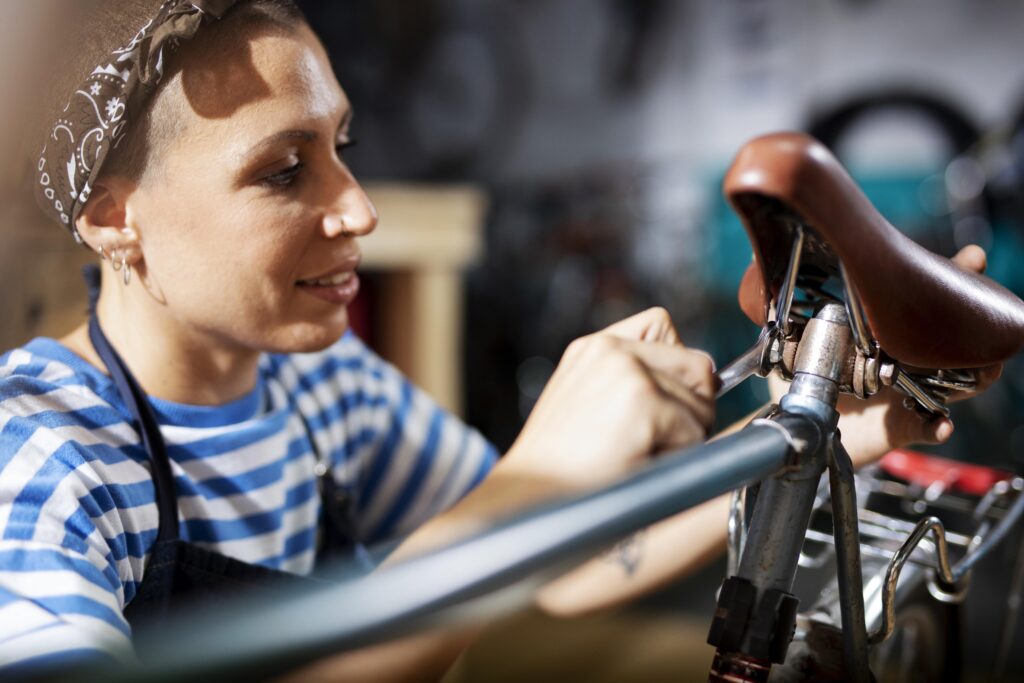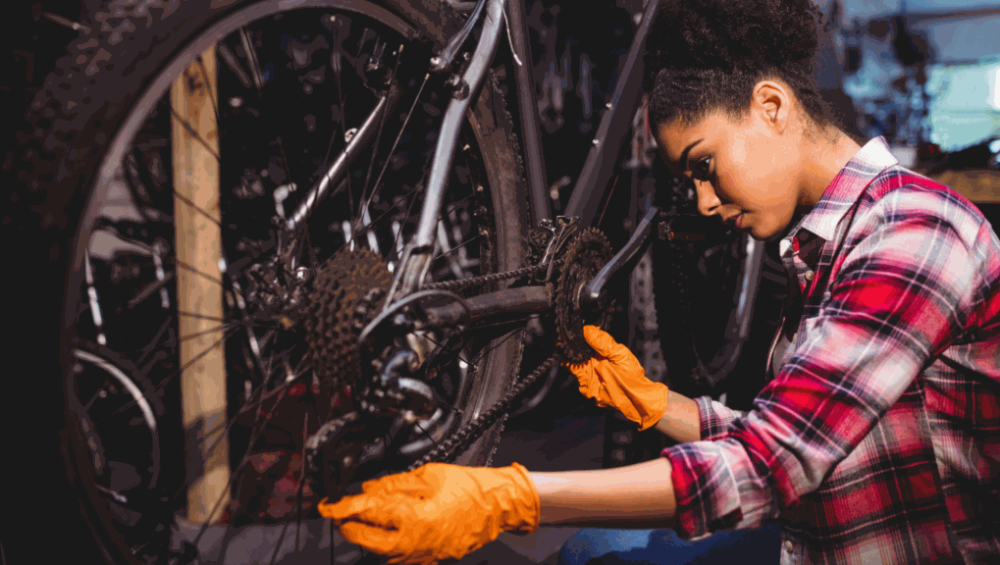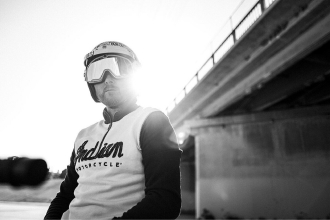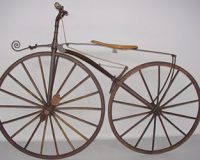Cambio bikes India have progressed from being only a recreational tool to a legitimate investment over the past several years. A serious Cambio bike India no longer needs to fall into the caricaturist’s joke that your bike is worth more than your car. Unfortunately, acquiring the bike is just the beginning of your financial commitment. It is vital to maintain your Cambio bikes–regardless of how much money you paid on them–to enjoy them, ride safely, and guarantee that they are last long enough for you to use the money you save to purchase your next Cambio bikes.
How to Take Care of your Mountain Bikes?
You can enhance your bike setup and keep it running well without spending much money if you’re new to mountain biking with Cambio bikes India. If you’re not new to mountain riding, the following advice will help you get started.
Don’t make the mistake of assuming the stock saddle is correct.
Some people find stock saddles more comfortable than others. However, even if stock saddles have improved in recent years, riding in one is still a very personal experience. Most likely, if you don’t find your saddle to be comfortable, you need to change it since it isn’t the correct fit for your body type. Fortunately, this does not have to be costly, and many decent bike shops offer saddle trial programs that allow you to test before you purchase.
Make sure your shifting is correct.
Test drive the vehicle in all of its gears during your brief test ride. Double-check if they don’t feel right to ensure that your wheels are correctly placed in the skewers or through-axles. You should know how to move the barrel adjustment on your shifters forward or backward if they are. You should be cautious if you don’t see what you’re doing since it is simple to make shifting worse if you start twisting things randomly. Also, inspect your chain to ensure that all links flow smoothly between the chainring (front) and cassette (rear) without missing a link or two. You may have a frozen link in your chain if your chain is skipping. Lubricate it.

Get a good hold on yourself.
It is essential to have grips to keep your hands comfortable and in control when you are riding since your hands are one of your most important points of contact with the bike. The majority of entry-level bikes are equipped with easy grips that are durable but not very comfortable. A solid grip will prevent chatter and enable you to hold the handlebars with a lighter grip, which will result in improved bike handling and less hand strain in the long run. ESI grips are a favorite of ours for the majority of our riding.

Make sure your bolts and screws are in good working order.
It is especially true for a component you may have just fitted, especially if it has a lot of torque, such as a new chainring. After a few rides, some of these pieces may become loose. Also, it’s crucial to regularly check the bolts on all of your parts to ensure that none are open or have come free. When checking bolts, refrain from over-tightening them since this may cause harm to the component if you do it too often. A torque wrench or a T handle torque wrench are recommended to ensure that carbon bars, seat posts, and other components are not over-tightened and damaged since this may result in premature failure of the element.
Organize your tyres
Tyre pressure is particularly vital for maintaining traction on the road surface. The tyre will deflect away from the road surface and create a loss of grip if the pressure is too high, while the pressure is too low will result in the dreaded pinch flat, or even worse – damaged rims, if the pressure is too low.
While many Bicycle/Bike manufacturers are adding better tyres on their bikes these days, it does not always indicate that they are appropriate for your local circumstances. Find out what other people in your region are riding and rating, and then give it a go yourself. It’s astonishing how big of a difference there is in the treads between them.
You won’t have to wash your bike after every ride most of the time. It might be harmful since you continuously expose your bottom bracket and hubs to water and soap, making them wear down more quickly. The climate you live and ride determines how often you should wash your bike, changing the seasons. If you ride in mud or rainy weather regularly, you may need to wash your bicycle more often. Otherwise, a mild wash once a week is adequate to maintain it clean and ready for inspection, testing, and lubricating procedures.
Install chainstay protection if necessary
Derailleurs on low-cost bicycles are also low-cost. Compared to better grade derailleurs, a cheap derailleur lacks the spring tension necessary to prevent chain slap against the chassis. Installing chainstay protection can help keep your frame’s paint in good condition while also reducing the sound of metal against metal. Aside from that, chainstay guards are inexpensive, and you can create one out of an old inner tube for free.
Don’t scrimp on maintenance.
Many abandoned bicycles may be seen on the road and along the path. There is no justification for component failure due to wear and strain – it can all be avoided by performing routine preventative maintenance. Listed below are several video maintenance workshops that you may find helpful. And keep in mind that just because your bike is inexpensive does not imply that it is any less enjoyable. Everyone enjoys riding a bike as long as it’s in good working order.
Frequently Asked Questions
After riding my mountain bike, do I have to clean it? Approximately every 100 miles, you should degrease and re-grease your road bike drivetrain. In dry climates, you should clean your mountain bike after every muddy ride or every two weeks if you ride it regularly.
What is the recommended frequency of bike cleaning? A road bike should be cleaned every month (or every 20 to 25 rides), whereas a mountain or ‘cross bike should be cleaned more frequently.
When it comes to watering your bike, is it ok? Water can be an invaluable tool when used carefully, but be cautious. Your bike’s sensitive bearing systems can be damaged by water, especially from high-pressure hoses. If you need to clean your bike’s frame, use diluted dishwashing soap or a bicycle wash cleaner.
How will your bike look if you don’t clean it? Your drivetrain is especially vulnerable to abuse and neglect, as it keeps you moving. A grimy chain causes sloppy shifting and wears out cassette cogs. Chainrings that are gunked up slow you down, and rusty rims and brake pads cause your brakes to wear down.
When it comes to cleaning your bike, are there any limits? A bike can never be too clean. If you ride on road salt in the winter, you should clean your bike more often as it is bad for your drivetrain. If the drivetrain gets muddy on any bike, I will clean it. Getting mud on the chain can cause a lot of problems.







